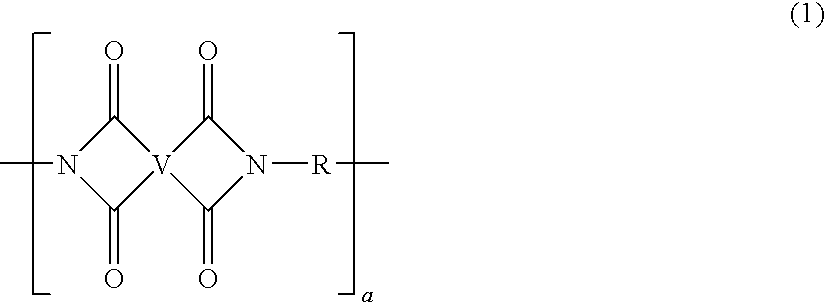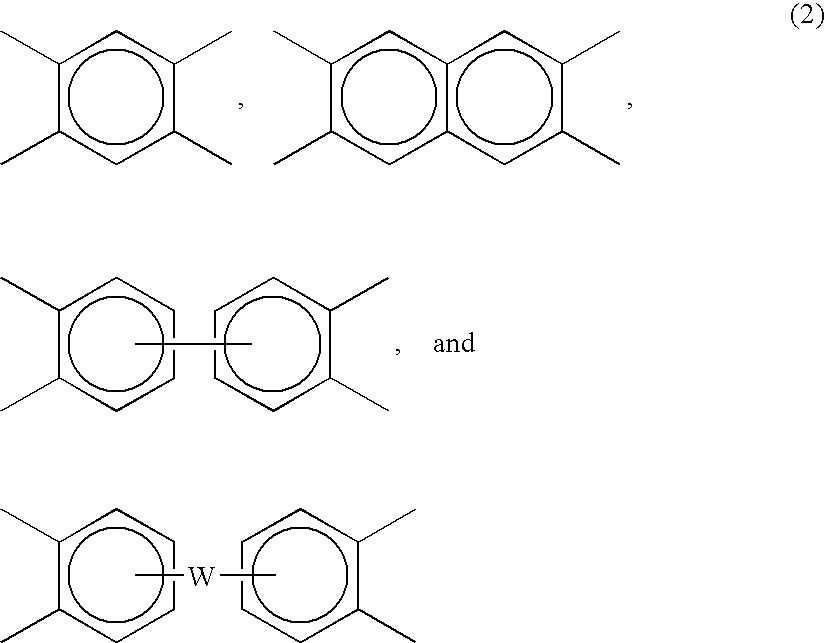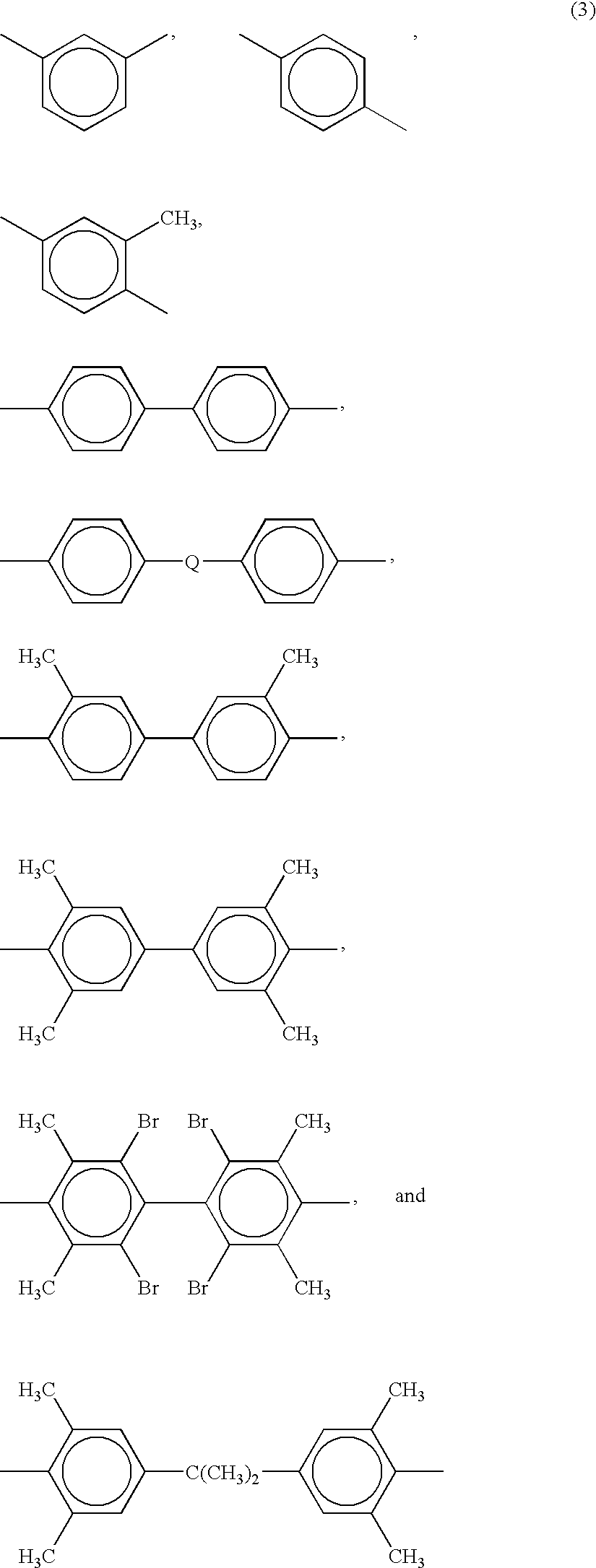Polyetherimide polymer for use as a high heat fiber material
a polyetherimide and high-heat fiber technology, applied in the direction of fibre treatment, filament/thread forming, transportation and packaging, etc., can solve the problems of little commercial manufacture of artificial fibers, inability to accurately predict whether a new polymer will make a viable commercial fiber, and undiscovered synthetic polymers
- Summary
- Abstract
- Description
- Claims
- Application Information
AI Technical Summary
Benefits of technology
Problems solved by technology
Method used
Image
Examples
examples
[0162]The following examples are included to provide additional guidance to those skilled in the art of practicing the claimed invention. These examples are provided as representative of the work and contribute to the teaching of the present invention. Accordingly, these examples are not intended to limit the scope of the present invention in any way.
[0163]A series of extrusion runs were conducted to extrude polyetherimide into fibers of approximately 1 to 8 denier per filament (dpf) at various processing conditions. The ULTEM 9011 polyetherimide resin in the form of pellets, available from GE Plastics of Pittsfield, Mass., had a number average Mw of approximately 21,000 g / mole, a melt index that ranged from approximately 1.8 to 2.2, and were dried at approximately 300° C. for about four to six hours prior to extrusion. The pellets were fed at a feed rates of 1 to 10 Kg / hr through a one inch (1″) single screw extruder (L / D=24 / 1). The actual melt temperature of the polymers ranged be...
PUM
| Property | Measurement | Unit |
|---|---|---|
| size | aaaaa | aaaaa |
| size | aaaaa | aaaaa |
| size | aaaaa | aaaaa |
Abstract
Description
Claims
Application Information
 Login to View More
Login to View More - R&D
- Intellectual Property
- Life Sciences
- Materials
- Tech Scout
- Unparalleled Data Quality
- Higher Quality Content
- 60% Fewer Hallucinations
Browse by: Latest US Patents, China's latest patents, Technical Efficacy Thesaurus, Application Domain, Technology Topic, Popular Technical Reports.
© 2025 PatSnap. All rights reserved.Legal|Privacy policy|Modern Slavery Act Transparency Statement|Sitemap|About US| Contact US: help@patsnap.com



